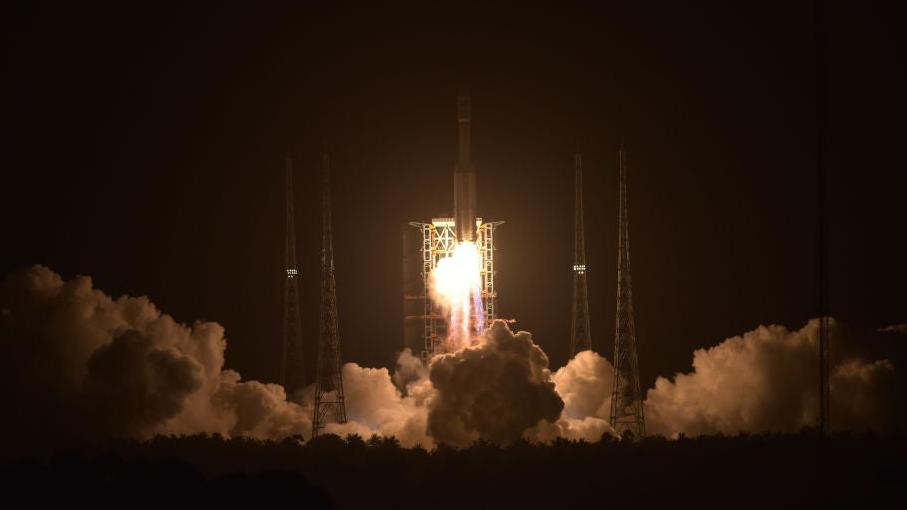With All Due Respect, No One Cares That Your Product Went To Space
Marketing campaigns for "space food" are not interesting in the least.
For the past few weeks, Matthew McConaughey has regularly appeared on our TV screens as an astronaut in a hot air balloon. The expensive Salesforce ad, "The New Frontier," shows McConaughey initially awed by the vastness of space before giving it a resounding "meh" and lowering his balloon back down to Earth. Translation: Billionaires need to stop rushing to colonize space when there's plenty to hold our attention down here on Earth. Even though it's a message directed at the Bezoses and Musks of the world, it's one that I hope food and beverage brands pay attention to as well.
Stop sending our snacks to space as a promotional gimmick. I promise you we don't care that they've made the trip.
A brief history of snacks in space
Over the past several years, two things have made it increasingly feasible to ferry edible stuff into space: For one thing, NASA has awarded an increasing number of Commercial Resupply Services (CRS) flights to the International Space Station (ISS). For another, commercial spaceflight has revved up as a viable industry, dragging memorabilia up into space along with it.
Naturally, this has given ambitious marketing teams for the world's biggest food and beverage brands some ideas about how to make a splash with their products. Here's a partial list of some mass-produced snack foods sent into space in the 21st century:
- Pizza: In May 2001, Pizza Hut "delivered a pizza to outer space" by sending a. pepperoni pie to the ISS aboard a Russian supply rocket for cosmonaut Yuri Usachov to eat. It was loaded with extra salt to combat the deadening effect that outer space has on human taste buds, and since pepperoni doesn't actually stay fresh throughout long weeks of travel, it was technically a salami pizza. This smallish salami salt-bomb cost $1 million in promotional budget for Pizza Hut.
- A Single Chicken Nugget: In October 2020, Iceland Foods Ltd., a British supermarket chain, sent a chicken nugget into Near Space (110,000 feet) to celebrate the company's 50th anniversary. Why? Because Iceland's products are "out of this world," of course, and the nuggets are a customer favorite. For the stunt, Iceland hired Sent Into Space, a company whose whole schtick is sending items into Near Space and film the results for promotional purposes.
- Sam Adams Beer Hops: In September 2021, Sam Adams sent 66 pounds of citra and mosaic hops into space aboard the first spaceflight with an all-civilian crew, the Inspiration4 mission. The mission lasted two days, after which the hops were used to brew Sam Adams Space Craft IPA. "We thought the hop character and whatever additional qualities it had taken on during the trip were so beautiful that we just wanted to keep the beer way in the background and let those hops shine," said brewer Rich Ferrell. So-called orbited hops are something the brewery hopes to work with again in the future.
In all these cases, the food was launched for slightly different purposes—to feed cosmonauts, to create a viral video, and to brew some beer—but the end goal for each one was to use space travel to generate buzz that might translate to more dollars spent down here on Earth. Could the measurable benefits of this kind of publicity possibly be worth the initial investment?
Even if it is right now, the answer might quickly become "hell no" once we all start suffering a little space fatigue. The easier and more commonplace it becomes to send food into orbit, the less these press releases will have left to brag about.
Some space food really is exciting
Ironically, there are some food and drink experiments currently happening aboard the International Space Station that would actually make for interesting eats, and these are exactly the ones that aren't intended for mass consumption.
Back in 2020, DoubleTree—yes, the hotel group—sent some of its signature chocolate chip cookie dough up to the ISS to test the possibilities of baking in space. A special zero-gravity oven baked the cookies one at a time within silicone pouches (minimizing dangerous instrument-clogging crumbs), then the finished cookies were hurled back down to Earth, landing by parachute in the Pacific Ocean to be collected by a Houston lab for testing. Wouldn't you want to taste the first sweet treat baked in a zero-gravity appliance?
Or how about radishes? While fresh, raw radishes might sound slightly less delicious than a warm, gooey cookie, it would nonetheless be exciting to eat a piece of produce grown entirely in space, as astronauts aboard the ISS experimented with back in December 2020. Space salad is infinitely more exciting than any other salad I can think of, and points to the long-term potential of interplanetary life much more than a chicken nugget strapped to a weather balloon does.
These foods are primarily intriguing because they were created in space. They became food while in orbit. They didn't just take a brief, expensive sojourn up above the clouds and return to Earth newly inflated by self-importance. Marketing campaigns should quit while they're ahead and stop trying to wow us with purely conceptual marketing. Don't try to give the product an elaborate astral backstory—just give us something that tastes good and we'll buy it.
Besides, we're trying to reduce the carbon footprint of our diet, not increase it.
